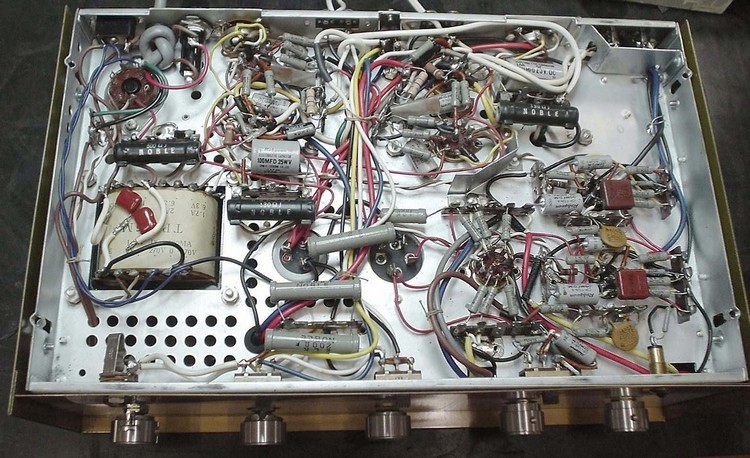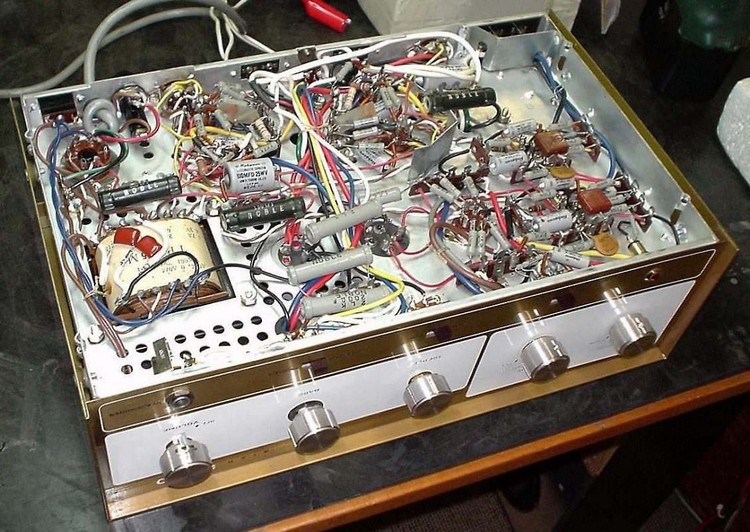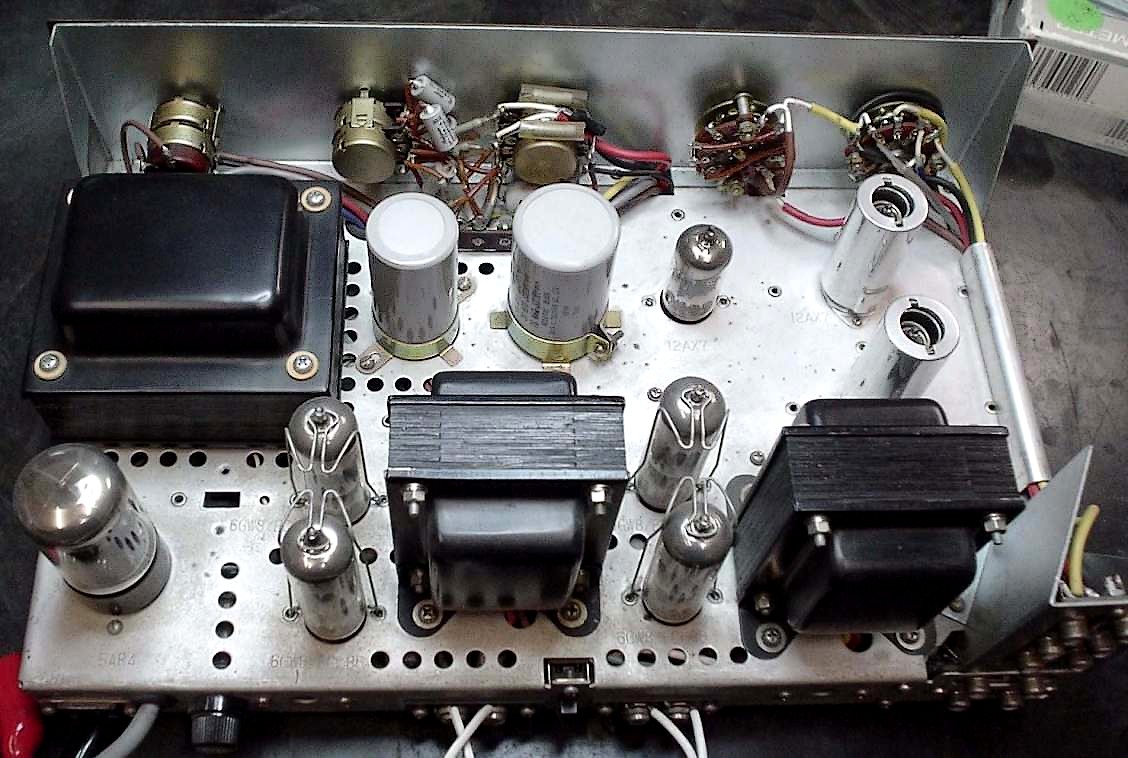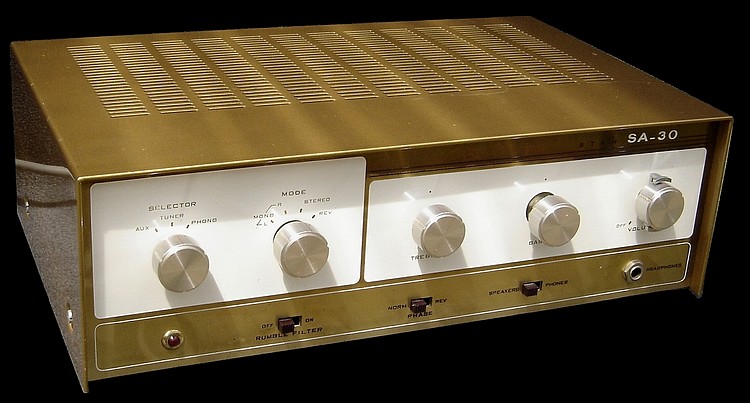Star SA-30 valve integrated amp:
The Star SA-30 was produced in the mid '60s as a budget priced amp capable of outperforming virtually all the competition for the price at the time, especially the abysmal solid state offerings of the same period which purported superior specifications of frequency response and distortion but were mostly aurally horrible. The circuit is as delightfully simple as it is effective. I think it sold for AU$112.50.
Was sold in Adelaide S.A. by the store known as Mac's Hi Fi in Rundle Street City.
You can download a copy of the original owner's manual complete with schematic here:
Having this stereo amplifier in my bedroom set the course for my future listening preferences. Other people had early solid state offerings which to me sounded awful - and they did. Sporting superior specifications, the protagonists insisted that valves were Inferior, and were destined for the rubbish dump. It was a classic case of wishful thinking really. The convenience of transistors was very appealing. The cart before the horse thing. Of course that's all changed now (or has it...). It's not the way it's done, it's how well that matters. I remember noticing how the Star would produce this warm inviting sound, and all the transistor amps I heard invoked 'grey' images in my mind's eye. They sounded like they were designed to kill the music dead - fatiguing and harsh. Really, with the exception of the NAD company and a few others, not much has changed. The vast bulk of commercially produced amplifiers now, are if anything worse than their forebears. The emergence of home theatre and surround sound has effectively de-constructed the world of Hi Fi and relegated it too the misty domains of dwindling music lovers and audiophiles. This is especially noticeable in Australia with the demise of almost every Hi Fi shop in town. No-one listens anymore; they just go to discount warehouses and buy off the shelf. It's part of the demise of Western Civilisation I think. Cashed up but flummoxed by choice.
The Star was in fact my first guitar amp. I hauled it all over the place and cranked it into a cabinet containing two Celestion 12" 25 watters. The sound was as warm as toast. I think I used the xtal input for the guitar. When not engaged as a guitar amp or stereo at home, I also dragged it around to parties with the twin 12" Celestion towers for loud music, replete with Connoisseur T.T. with Micro arm and Empire magnetic cartridge.. I think it made me a bit popular for a while!
Unusual features were individual bass/ treble controls with concentric knob and lever for the right and left channels. Also channel reverse function and phase reverse function switch on the speakers (which I have wired out to improve sound quality ...) On this example, the lever had been removed from the bass and treble controls unfortunately. I recently had to replace the twin pot volume control which gives a much more even balance than the old twin knob/lever ones. Click on pics for full view...
Star SA-30 valve integrated amp chassis underside showing the high reliability point to point wiring. All the high voltage coupling capacitors were of an oil filled type predating modern plastics and polymers (not electrolytics, used for the usual filtering and cathode coupling), which in the main seem quite reliable considering the age of the unit. Two had to be replaced on the mains on/off switch filtering as can be seen on the left. The resistors are all wire wound paint coated of standard values predating the modern stepped values. e.g. 250K; 100K; 50K etc rather than 270K; 100K; 47K; 380K etc. I don't think they were precision types. I have changed the feedback resistors (click on the top underside pic to the see hi res one) to decrease negative feedback to free up the sound. The value I put in was 4K7. Looking at the pdf manual, the original value is 7K, which means I would have increased the negative FB. I'm pretty sure mine originally had 3K resistors there. I figure the original values were partially designed to impress with low distortion and wide response measurements, but the amp sounds better with less feedback - as do most.

RIAA equalisation combined with the tone circuitry is quite good, and sounds very well balanced with the tone controls in the neutral position. I dispensed with the ceramic p.i. input and facilitated a direct to power stage which brings out the true potential of this little amp - it simply sounds wonderful. I've also bypassed the speaker switches to improve fidelity.
The unit was physically quite small, measuring only 14" x 4" x 8", but quite heavy, and tended to run stinking hot in summer due to the small size.
Another shot of the Star SA-30 valve integrated amp chassis underside:



